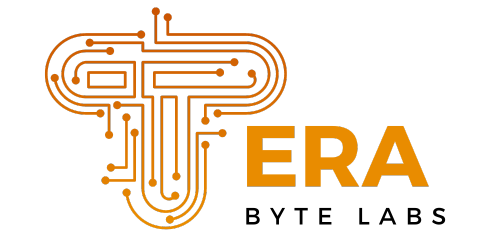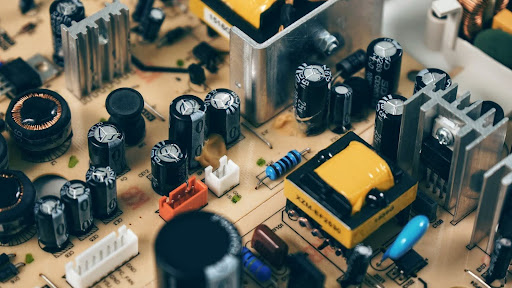Imagine this: your team goes into production, and then — a flaw. Time-consuming, costly, stressful. Back to square one once more. Now switch the situation. You imagine every detail, every surface, every angle prior to anything being built. No waste. No surprises. That’s the magic of 3D product rendering services.
It brings ideas alive with realistic images you can examine and perfect. It’s not just about making pretty pictures. It’s making better choices and keeping faster schedules. Not to mention saving money before production starts. Let’s discuss it in more detail.
3D Product Rendering
Services for 3D product rendering help your idea come to life before it’s properly built. It’s the art of transforming a theory into a realistic image that looks like the end result. Except it’s on screen, not in your hand.
Designers start out with a 3D model, typically built from CAD files. Surface details are next: color, texture, materials, and lighting. At this stage, you can also benefit from visualization studios like PIXREADY that add tiny tweaks here and there (adjusting lighting, materials, and textures) to create realistic, high-quality renders that bring finished designs to life.
A good 3D product render consists of the following:
- A precise 3D model based on the shape and size of your product.
- Real materials and textures — from smooth metal to soft fabric.
- Studio-quality or natural lighting to capture the shape of the product.
- Camera shots that show its most persuasive qualities.
While CAD drawings show technical data and measurements, renders are all about presentation. They add realism. They show how your product will look in real life. Each shine and each curve becomes real. Your team will be able to see and feel the full design before it’s built.
The result is a clear vision for everyone to share. From engineers to marketers, no longer do they have to imagine the product in different ways. Everyone on the team can see the same thing, long before they actually start production.
Traditional Prototyping Isn’t Enough
For decades, physical prototypes were the go-to method for testing designs. They come with challenges: they’re expensive and time-consuming. Often even wasteful.
Each change means building a new version. This can take weeks. If you’re manufacturing complex machinery, for example, those costs multiply quickly.
That is why manufacturers are using the services of rendering 3D products more and more as an early validation. You can see the final product, experiment with different alternatives, and fix possible mistakes. All without having to make a single physical prototype. It’s faster and less risky. No more costly surprises with pros like PIXREADY.
Key Benefits of 3D Rendering for Manufacturers
There are at least 5 key advantages we need to discuss.
1. Detecting Errors Early On
A small mistake can become a big deal later. An uneven surface or a wrong component can be difficult to correct once mass production is underway.
With 3D rendering, you will catch these errors before they happen in real life. Seeing the product in realistic detail helps everyone involved to catch issues early. This, of course, means fewer revisions.
2. Saving Time and Money
Traditional prototyping takes weeks. Rendering takes days. Sometimes hours.
Since you don’t have to make multiple versions, you save on material and shipping costs. Approvals also come faster because decision-makers can clearly see changes. The outcome? Quicker development cycles and lower overall cost.
3. Better Team and Client Communication
Technical drawings are hard to decipher for non-engineers. A photorealistic image, however, speaks a more universal language.

3D renderings help to show the design intent to clients and stakeholders. The marketing department will have an easier time understanding what they need to promote. They can see what the final product will look like. This transparency helps to avoid miscommunication.
4. Ready for Marketing Even Before Launch
With 3D rendering, you can start marketing campaigns before the production process even begins. Those renderings can be used for web stores and investor presentations. You can create package visuals and website content several months before the launch. That’s a huge time-saver for brands with aggressive schedules.
5. Sustainable Solution
Sustainability is more important than ever, and 3D rendering supports it. You don’t need many physical prototypes, which means manufacturers use less material. That leads to less waste. They also use less energy spent on shipping samples to and from one another.
Real-World Use Cases
3D rendering is already transforming the way manufacturers work across industries. Here are a few examples:
- Consumer Electronics. Businesses use 3D rendering to experiment with finishes and packaging before production. For example, a cell phone business can visualize how the new metallic finish would look under different lighting without producing a single unit.
- Automotive Industry. Car manufacturers render interiors and paint colors to test designs virtually. They can show customers different trims before the vehicle hits the assembly line.
- Furniture and Home Furnishings. With 3D rendering, designers can demonstrate unlimited color and materials. Even customers can see products in virtual stores.
Instead of waiting for sample models, your design team can approve renderings directly. You’ll skip thousands in prototyping costs.
Starting with 3D Rendering Is Easy
Here is a step-by-step guide to give you an idea of how 3D rendering works.
1. Choose a Team
Find the professionals who have experience in 3D design. Industry knowledge helps provide more accurate results.
2. Prepare Your 3D Models or CAD Files
Most of the rendering work begins with existing technical models. Otherwise, designers will model from drawings or product specs.
3. Set Materials, Lighting, and Angles
Decide what kind of images you need. Close-ups? Full shots? Product-in-context photos? Establish textures, colors, and finishes for realism.
4. Analyze and Refine
Once you have the initial render, review it with your team. Refine until the visuals are precisely what you had in mind.
Remember, working with professionals who have experience can help you to get high-quality renders quicker.
Final Thoughts
Manufacturing is a smart investment. 3D rendering is an ideal addition to that equation. It allows you to see the product before you build it, identify potential issues ahead of time, and save money at each phase of development.
In short, 3D rendering isn’t a design tool only. It’s your competitive advantage. Seeing your product before it is made isn’t magic. It’s modern manufacturing done right.



